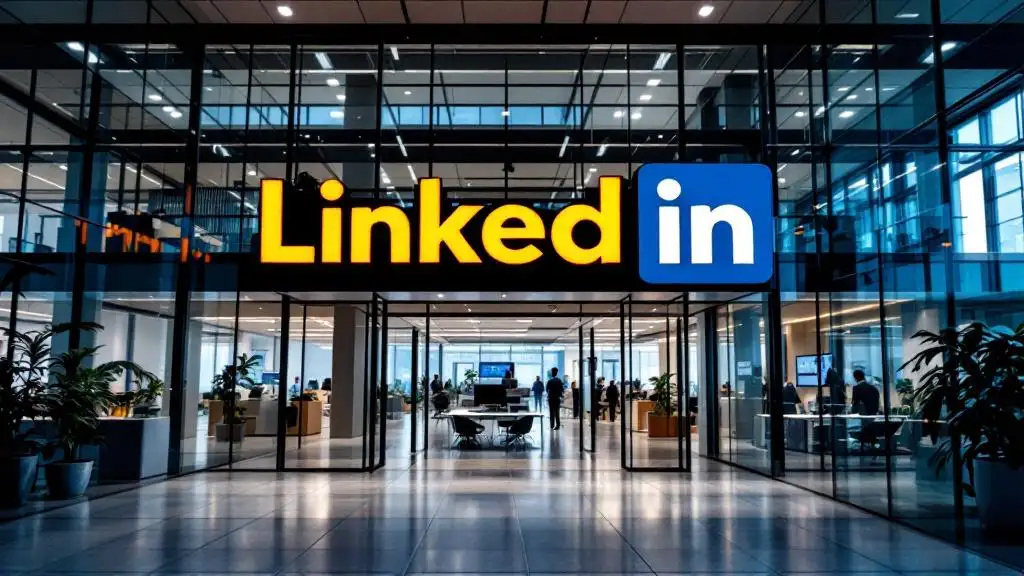Nursing Home Business Market Trends 2024
The field of healthcare marketing is constantly evolving, driven by technological advancements and changing consumer needs.


Nursing Home Business Market Trends 2024
Current Trends in Healthcare Marketing
The field of healthcare marketing is constantly evolving, driven by technological advancements and changing consumer needs. In this section, we will explore three current trends that are shaping the landscape of healthcare marketing: the growth of artificial intelligence and machine learning, the expansion of the telemedicine market, and the rise of the Internet of Medical Things (IoMT).
Growth of Artificial Intelligence and Machine Learning
Artificial intelligence (AI) and machine learning (ML) are revolutionizing the healthcare industry by enhancing patient care, improving operational efficiency, and enabling personalized marketing strategies. The costs dedicated to AI and ML in the healthcare sector are projected to surpass 10.5% in 2024, up from 5.5% in 2022.
AI and ML algorithms can analyze vast amounts of patient data to identify patterns, predict outcomes, and provide valuable insights for healthcare marketers. This data-driven approach enables targeted marketing campaigns, personalized messaging, and improved patient engagement. Additionally, AI-powered chatbots and virtual assistants are being used to provide instant support and answer common patient queries, enhancing the overall patient experience.
Expansion of Telemedicine Market
Telemedicine has experienced significant growth in recent years, and its popularity has soared even further due to the COVID-19 pandemic. The telemedicine market is expected to reach $185.6 billion by 2026. Telemedicine allows healthcare providers to remotely deliver medical services, consultations, and patient monitoring through digital platforms.
From a marketing perspective, telemedicine offers opportunities to reach a wider audience and provide convenient access to healthcare services. Healthcare marketers can leverage telemedicine platforms to promote their services, engage with patients, and establish virtual relationships. Telemedicine also enables targeted marketing efforts by tailoring campaigns to specific patient demographics and medical conditions.
Read about: 16 Marketing Ideas for Nursing Homes in the Digital Age
Rise of Internet of Medical Things (IoMT)
The Internet of Medical Things (IoMT) refers to the network of interconnected medical devices, wearables, and sensors that collect and transmit patient data for monitoring and analysis. The IoMT market was valued at $30.5 billion in 2020 and is expected to reach $144.23 billion by 2022, with a projected compound annual growth rate (CAGR) of 20.4% from 2023 to 2030 [1].
The IoMT presents healthcare marketers with new opportunities to gather real-time patient data and deliver personalized experiences. By leveraging data from wearable devices and sensors, marketers can gain insights into patient behavior, preferences, and health conditions. This data can inform targeted marketing campaigns, product development, and the delivery of personalized healthcare services.
As healthcare marketing continues to evolve, it is essential for marketers to stay updated on these trends and leverage the power of AI, telemedicine, and the IoMT. By embracing these innovative technologies, healthcare marketers can enhance patient engagement, deliver personalized experiences, and drive meaningful outcomes in the evolving healthcare landscape.

Technology Adoption in Healthcare
As the healthcare industry continues to evolve, the adoption of technology plays a crucial role in improving patient care and enhancing operational efficiency. In this section, we will explore three key areas of technology adoption in healthcare: smart wrist devices usage, legacy systems in health systems, and wearable sensors in healthcare.
Smart Wrist Devices Usage
Smart wrist devices, such as fitness trackers and smartwatches, are gaining popularity among individuals looking to monitor and improve their health and well-being. According to a source, approximately 3 out of 10 working-age internet users possess a smart wrist device.
These devices offer various features that can benefit both patients and healthcare professionals. They can track physical activity, monitor heart rate, sleep patterns, and even provide reminders for medication adherence. For healthcare providers, the data collected from these devices can provide valuable insights into a patient's overall health and lifestyle habits, aiding in diagnosis and treatment decisions.
Legacy Systems in Health Systems
Despite the advancements in technology, many health systems still rely on legacy systems for their operations. According to the same source, approximately 73% of health systems utilize medical equipment operating on legacy operating systems.
Legacy systems refer to older computer systems, software, or hardware that are outdated and no longer supported by the manufacturer. These systems can pose challenges in terms of interoperability, data security, and scalability. However, efforts are being made to modernize these systems and transition to more advanced and integrated solutions to improve efficiency and patient care.
Wearable Sensors in Healthcare
Wearable sensors are becoming increasingly prevalent in healthcare settings. These sensors are designed to be convenient and unobtrusive, allowing for uninterrupted evaluation of medical symptoms. They can monitor vital signs, behavior, and mobility of patients, providing valuable data for healthcare professionals.
There are various types of wearable sensors used in healthcare. Some of the most common include blood pressure sensors, body temperature sensors, electrocardiography (ECG) sensors, electroencephalogram (EEG) sensors, pulse oximeters, heart rate monitors, and motion/activity sensors. These sensors enable continuous monitoring of patients' health status, allowing for early detection of abnormalities and timely interventions [2].
In addition to wearable sensors, ambient or environmental sensors are also gaining traction in healthcare. These sensors can measure temperature, humidity, air pollution, and other physical environmental changes, providing insights into the impact of the environment on patients' health and well-being [2].
By embracing technology, healthcare providers can leverage the capabilities of smart wrist devices, modernize legacy systems, and harness the power of wearable sensors to enhance patient care, improve operational efficiency, and drive better health outcomes. The integration of these technological advancements can pave the way for a more connected and patient-centric healthcare ecosystem.

Trends in Senior Living and Care Industry
The senior living and care industry is constantly evolving to meet the changing needs and preferences of older adults. In this section, we will explore three significant trends shaping the industry: occupancy gains in senior living settings, growth in skilled nursing facilities, and a focus on home health care.
Occupancy Gains in Senior Living Settings
The senior living and care industry experienced positive occupancy gains across all settings in 2023, and this upward trend is expected to continue in 2024. According to CLA Connect, many anticipate reaching pre-COVID occupancy levels in 2024. Assisted living and memory care are projected to outpace independent living in terms of occupancy gains.
Understanding local market trends is crucial for analyzing the variations in occupancy gains in skilled nursing facilities (SNFs). While occupancy gains persisted throughout 2023, economic factors and regulations in the SNF space create differences when comparing states and national trends. It is important for industry professionals to closely monitor local market dynamics to make informed decisions [3].
Growth in Skilled Nursing Facilities
Skilled nursing facilities (SNFs) play a vital role in providing specialized care to seniors with complex medical needs. Despite the challenges faced by the industry, SNFs have shown resilience and continued growth. The demand for skilled nursing services remains high, driven by the aging population and the need for comprehensive care.
As the population ages, the demand for SNFs is expected to rise. However, it is important to consider the economic and regulatory factors that influence the growth of SNFs at both the state and national levels. Understanding the local market trends and adapting to the changing landscape are crucial for SNFs to thrive in this evolving industry.
Focus on Home Health Care
Home health care has been gaining significant attention and experiencing impressive growth rates in the senior living and care industry. This trend is propelled by consumer demand for personalized care in the comfort of their own homes, coupled with advancements in technology that support home-based care.
Many organizations are expanding their focus on home health care, recognizing the benefits it offers to seniors and their families. Existing home-based care companies are also maturing as they transition between home health care and home care services. The emphasis on home health care aligns with the desire of seniors to maintain their independence and receive care in familiar surroundings.
The projected growth of the senior population, particularly those aged 85 and over, underscores the importance of senior care and wellness. As the population continues to age, the demand for senior care services is expected to grow. Seniors are actively pursuing physical, mental, and social wellness, creating opportunities for innovative care models and services to meet their evolving needs [3].
The senior living and care industry is complex and dynamic, influenced by various factors such as demographic shifts, economic conditions, and technological advancements. By staying informed about these trends and adapting to the changing landscape, industry professionals can navigate the market and provide high-quality care to older adults.
Market Projections for Nursing Home Beds
As we look ahead to the future of the nursing home business market, it is important to understand the global market outlook and the key manufacturers and market players shaping the industry.
Global Market Outlook
The global market for nursing home beds is anticipated to experience significant growth between 2024 and 2031. According to industry experts, steady growth is expected in 2023, with a substantial rise projected over the forecast period. Factors driving this growth include the rising adoption of strategies by key players in the industry [4].
Due to the impact of the COVID-19 pandemic and other global events, the market for nursing home beds is projected to grow from USD million in 2023 to USD million by 2031. This represents a compound annual growth rate (CAGR) of Percent during the forecast period of 2023-2031 [4]. This growth is expected to be driven by the growing demand for applications worldwide.
Key Manufacturers and Market Players
In the nursing home beds market, several key manufacturers and market players play a significant role in shaping the industry. These companies are at the forefront of innovation and provide a range of products and services to meet the needs of the market.
Some of the key manufacturers in the nursing home beds industry include:
- Savion Industries
- Favero Health Projects
- Transfer Master
- LINET Group
- Merits Health Products
- Sidhil
- ArjoHuntleigh
- NOA Medical Industries
- Roscoe Medical
In 2021, the global top five players shared approximately Percent of the revenue in the market. These manufacturers are constantly striving to enhance their products, improve patient comfort, and meet the evolving demands of the market.
The market projections for nursing home beds indicate a positive outlook, with significant growth potential in the coming years. The presence of key manufacturers and market players further strengthens the industry and ensures that high-quality products and services are available to meet the needs of nursing homes and care facilities worldwide.
It is important for industry professionals and stakeholders to closely monitor market trends and advancements in order to stay ahead in this dynamic and evolving market. By understanding the global market outlook and the key players driving the industry, stakeholders can make informed decisions and contribute to the growth and development of the nursing home business market.
Senior Care and Living Services Market
The Senior Care and Living Services market is a rapidly growing sector that provides essential care and support to the elderly population. This market encompasses various services, including assisted living, independent living, memory care, and home healthcare. Let's explore the market size and growth projections, as well as the factors driving its expansion.
Factors Driving Market Expansion
Several factors contribute to the expansion of the Senior Care and Living Services market. These factors include:
- Technological Advancements: The integration of advanced technologies, such as remote monitoring systems, wearable devices, and telehealth solutions, has revolutionized the senior care industry. These technological advancements enhance the quality of care, improve efficiency, and enable seniors to age in place comfortably.
- Heightened Demand: The aging population worldwide is driving the demand for senior care services. As life expectancy increases, there is a greater need for specialized care, personalized assistance, and supportive living environments for older adults. This growing demand creates opportunities for the development of new senior care facilities and services.
- Supportive Government Policies: Many governments recognize the importance of senior care and have implemented policies to support the growth of the industry. Government initiatives, such as funding for senior care programs, tax incentives, and regulations that ensure quality standards, contribute to market expansion and attract investments.
- Increasing Consumer Awareness: There is a rising awareness among consumers about the importance of senior care services. Families are seeking professional care options that provide a safe and comfortable environment for their elderly loved ones. Additionally, the emphasis on health and wellness, along with the shift towards sustainable and eco-friendly products, influences consumer preferences in the senior care market.
The Senior Care and Living Services market presents significant growth opportunities for both established players and new entrants. The industry's favorable market dynamics, emerging trends, and supportive factors contribute to a conducive environment for expansion [5]. As the market continues to evolve, it is crucial for businesses operating in this sector to stay abreast of these trends and seize the opportunities for growth.
The Senior Care and Living Services Market report provides a comprehensive examination of the sector, highlighting market divisions based on type, application, and geographical region. This analysis allows stakeholders to gain a deeper understanding of the market landscape and make informed decisions regarding investments, partnerships, and strategic initiatives within the senior care industry.
Long Term Care Market Analysis
The long-term care market plays a critical role in providing necessary care and support to individuals who require assistance with their daily activities. Analyzing the market size and growth forecast, as well as understanding the impact of COVID-19 on market trends, is essential for stakeholders and industry participants.
Market Size and Growth Forecast
The global long-term care market is expected to witness significant growth during the forecast period from 2024 to 2032. According to a research report, the market is projected to reach USD 1,350,000.0 million by 2027, growing at a CAGR of 6.03% [6]. The market size was valued at USD 950,000.0 million in 2021 and is anticipated to experience steady growth over the forecast period [6].
The long-term care market encompasses various types of care, including home healthcare, hospice, nursing care, and assisted living facilities. These different segments contribute to the overall growth of the market. The report provides detailed historical analysis from 2018 to 2024 and offers extensive market forecasts from 2024 to 2032, helping stakeholders and vendors make informed decisions.
Impact of COVID-19 on Market Trends
The COVID-19 pandemic has had a profound impact on various industries, including the long-term care market. The report acknowledges the impact of COVID-19 on the market and provides a recovery analysis. It takes into account the emerging market trends, mergers and acquisitions, and regional conflicts that have influenced the market dynamics [6].
The pandemic has highlighted the importance of long-term care services and the need for enhanced safety measures in such settings. It has also accelerated the adoption of technology in long-term care, enabling remote monitoring, telehealth services, and virtual consultations. These changes in the market landscape have influenced the growth and development of the long-term care industry.
As the world continues to navigate the challenges posed by the pandemic, the long-term care market is expected to adapt to the evolving needs of individuals requiring care and support. By understanding the impact of COVID-19 on the market and staying informed about emerging trends, stakeholders can effectively navigate this dynamic landscape and contribute to the growth and improvement of long-term care services.
References
[1]: https://mobidev.biz/blog/technology-trends-healthcare-digital-transformation
[2]: https://www.ncbi.nlm.nih.gov/pmc/articles/PMC9601636/
[3]: https://www.claconnect.com/en/resources/articles/24/top-5-trends-shaping-the-senior-living-and-care-industry-in-2024
[4]: https://www.linkedin.com/pulse/nursing-home-beds-market-outlook-2024-trends-en5ne
[5]: https://www.linkedin.com/pulse/senior-care-living-services-market-report-2031-lav8f/
[6]: https://www.linkedin.com/pulse/2024-long-term-care-market-trends-research-report-jogxe/







